Association of intravenous insulin and glucose infusion with mortality

Intravenous insulin administration is associated with an increased risk of ICU and hospital mortality, after correction for potential confounders” van Steen et al (2019). Abstract: Background: We assessed the association of intravenous insulin and glucose infusion with intensive care unit (ICU) and hospital mortality. Methods: For this retrospective association study, we used data from all […]
Vascular access audit in home hemodialysis patients

Vascular access audit is a feasible quality initiative, which leads to a decrease in the number of patient reported errors in vascular access” Dhruve et al (2019). Abstract: INTRODUCTION: Vascular access complications are associated with increased morbidity and mortality in home hemodialysis (HHD). Nurse-administered vascular access checklist is a feasible quality improvement strategy aimed to […]
Outpatient follow-up of OPAT patients reduces readmission

We conducted a pair-matched case-control study to examine the association between outpatient infectious disease follow-up and the risk of 30-day readmission in 384 patients receiving outpatient parenteral antimicrobial therapy (OPAT)” Saini et al (2019). Abstract: We conducted a pair-matched case-control study to examine the association between outpatient infectious disease follow-up and the risk of 30-day […]
Repair of central venous catheters in home parenteral nutrition patients

CVC repairs can be performed in the office or on the ward and are cost effective when compared with CVC replacement. When performed by trained clinical staff, the procedures are highly successful and associated with low risk” Salonen et al (2019). Abstract: For patients receiving home parenteral nutrition (HPN), vascular access with a central venous […]
Challenges of long-term home parenteral nutrition
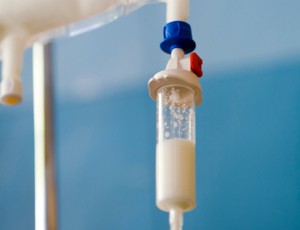
Patients receiving long-term home parenteral nutrition (HPN) and clinicians managing their care face complex challenges not fully addressed by existing clinical practice guidelines” Kumpf (2019). Abstract: Patients receiving long-term home parenteral nutrition (HPN) and clinicians managing their care face complex challenges not fully addressed by existing clinical practice guidelines. This review aims to increase awareness […]
Bloodstream infections due to carbapenemase-producing Enterobacteriaceae in Italy

Most of the cases originated in hospitals (87.2%), mainly in intensive care units (38.0%), and were associated with central or peripheral venous catheter use (23.9%) or with urinary tract infections (21.1%)” Iacchini et al (2019). Abstract: Following the rapid increase of infections due to carbapenemase-producing Enterobacteriaceae (CPE) in Italy, the national surveillance of bloodstream infections […]
Use of needleless connectors in neonates

To compare the duration of patency of peripheral intravenous cannulas between continuous infusion and intermittent flushing, while using a needleless intravenous connector in newborns admitted to the neonatal intensive care unit (NICU)” Hoff et al (2019). Abstract: Objective: To compare the duration of patency of peripheral intravenous cannulas between continuous infusion and intermittent flushing, while […]
Ceftazidime stability during continuous IV infusion

This article reviews the literature concerning ceftazidime stability and potential for toxicity from pyridine (a degradation product) in the light of decades of apparent safe use of this antibiotic when given by continuous i.v. infusion but recent changes in regulatory body/manufacturer advise a need to change infusion devices more frequently” Jones et al (2019). Abstract: […]
Vascular access outcomes in patients on hemodialysis

Vascular access dysfunction is a major cause of morbidity in patients with end-stage renal disease (ESRD) on hemodialysis (HD). Thus, identifying risk factors for vascular access failure is important” Kim et al (2019). Abstract: INTRODUCTION: Vascular access dysfunction is a major cause of morbidity in patients with end-stage renal disease (ESRD) on hemodialysis (HD). Thus, […]
Impact of central venous access in sepsis

The insertion of central venous catheters and access to a critical care physician during sepsis treatment are important capabilities in hospitals that transfer fewer sepsis patients” Ilko et al (2019). Abstract: OBJECTIVES: Severe sepsis is a complex, resource intensive, and potentially lethal condition and rural patients have worse outcomes than urban patients. Early identification and […]
Safety of potassium replacement in critically ill patients

To evaluate the effectiveness and safety of rule-of-thumb potassium replacement in critically ill patients with mild and moderate hypokalemia” Hammond et al (2019). Abstract: BACKGROUND: Rules of thumb for potassium replacement are used in intensive care units despite minimal empirical validation. OBJECTIVE: To evaluate the effectiveness and safety of rule-of-thumb potassium replacement in critically ill […]
Scrub the hub duration for the decolonization of needleless connectors

The aim of this prospective study was to identify colonization on the external surface of needleless connectors on central venous catheters and measure the efficiency of 15 s of scrubbing with 70% alcohol” Devrim et al (2019). Abstract: PURPOSE: The optimal scrubbing time for the disinfection of the surface of needleless connectors has not been determined. […]
PICC insertion in the sitting position for a patient with congestive heart failure

A peripherally inserted central catheter (PICC) is typically inserted with the patient in the supine position. Here, we placed a PICC in a patient in the sitting position, in order to treat congestive heart failure” Mitsuda et al (2019). Abstract: RATIONALE: A peripherally inserted central catheter (PICC) is typically inserted with the patient in the […]
Elastomeric pump malfunction resulting in over-infusion

About 17 h after the elastomeric pump was connected to the catheter, the 550 mL reservoir was found to be empty, indicating the pump’s infusion rate was more than 32 mL/h despite the pump still being set at an infusion rate of 8 mL/h with a possible 5 mL bolus every 30 min” Koogler et al (2019). Abstract: A 70 year-old female […]
Contribution of red blood cell transfusion to neonatal morbidity and mortality
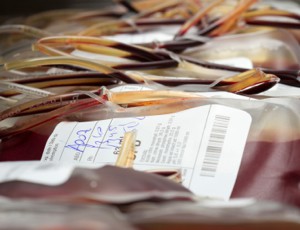
Anaemia of prematurity will affect 90% of all very preterm infants, resulting in at least one red blood cell (RBC) transfusion. A significant proportion of preterm infants require multiple transfusions over the course of hospital admission” Crawford et al (2019). Abstract: Anaemia of prematurity will affect 90% of all very preterm infants, resulting in at […]
Role of implantable ports in children with haematological malignancies

Totally implantable chemoports are preferred in children with solid and hematological malignancies because of decreased pain, the rate of infection, and ability to maintain patency for the long term” Redkar et al (2019). Abstract: AIM: The aim of this retrospective analysis was to identify the variously related complications and to study preventive and therapeutic measures […]
Infusion therapy standards of practice to improve peripheral IV catheter care

A case study approach is used to illustrate application of infusion therapy standards of practice in peripheral intravenous catheter insertion, indications for catheter placement, and assessment parameters to enhance early recognition of peripheral intravenous access-related complications” Nickel (2019). Abstract: The most common invasive procedure performed in the hospital setting worldwide is the insertion of a […]
Guide to better practice reduces amiodarone-induced phlebitis

Understanding factors that increase the risk of amiodarone-induced phlebitis can guide better practice. In-line filters and nursing guidelines should always be implemented when administering intravenous amiodarone. Increased surveillance is required when higher dosages and concentrations are used” Oragano et al (2019). Abstract BACKGROUND: Intravenous amiodarone is the gold-standard treatment for arrhythmias, but phlebitis is a […]
Intranasal route is comparable to intravenous administration

Medications administered by the intranasal route have efficacy comparable to intravenous administration and typically have superior efficacy to subcutaneous or intramuscular routes” Tucker et al (2018). Abstract: Intranasal drug administration is a less invasive method of drug delivery that is easily accessible for adult and pediatric patients. Medications administered by the intranasal route have efficacy […]
Turnaround time for blood transfusion as a quality indicator

The turnaround time (TAT) for blood transfusion (BT) is an important quality indicator for the health-care institutions undertaking this procedure” Agnihotri and Agnihotri (2018). Abstract: BACKGROUND AND AIM: The turnaround time (TAT) for blood transfusion (BT) is an important quality indicator for the health-care institutions undertaking this procedure. There is no established national or international […]
Three years’ experience of dialysis event surveillance
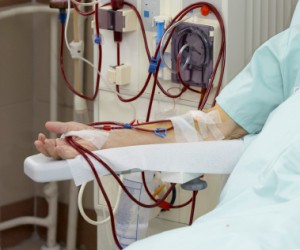
The main study aim was to track infections, evaluate performance, and identify opportunities for improved practice since infections, especially those associated with multidrug-resistant organisms, are the second most common cause of death among end-stage renal disease patients” Abdelfattah et al (2019). Abstract: Background: The main study aim was to track infections, evaluate performance, and identify […]
Bacterial colonization of peripheral intravenous cannulae

Studies showing the actual prevalence of colonization of peripheral IV cannulas and its role in BSI are lacking. Hence, this study was aimed to estimate the prevalence of colonization of the injection ports of peripheral IV cannulas” Rai et al (2019). Abstract: BACKGROUND: The use of intravenous (IV) cannulas is an integral part of patient […]
Validation of the A-DIVA scale for difficult intravenous access in adults

This study aimed to improve the A-DIVA scale (Adult Difficult Intra Venous Access Scale) by external validation, to predict the likelihood of difficult intravenous access in adults” van Loon et al (2019). Abstract: Peripheral intravenous cannulation is the most common invasive hospital procedure but is associated with a high failure rate. This study aimed to […]
Stenosis and thrombosis-unveiled complications of buttonhole cannulation
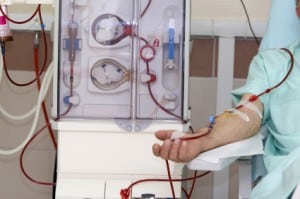
We discuss two cases of stenosis and thrombosis related to buttonhole puncture which heralded angiography intervention, raising awareness for the demand of close surveillance of arteriovenous fistulae when using buttonhole cannulation” Moreira et al (2019). Abstract: The vascular access is the mainstay of hemodialysis. Arteriovenous fistula has been prioritized as the first choice of long-term […]
Addition of dextrose to IV crystalloid therapy provide clinical benefit in acute dehydration?

Intravenous dextrose halts endogenous ketone production and is commonly recommended in dehydrated patients unable to tolerate oral intake” Grigsby et al (2019). Abstract: What is known about the topic? Intravenous dextrose halts endogenous ketone production and is commonly recommended in dehydrated patients unable to tolerate oral intake. What did this study ask? Is there evidence […]
Left femoral artery to right femoral vein bypass graft for hemodialysis access

The purpose of this case report was to describe our experience in creating a prosthetic graft between left femoral artery and right femoral vein in a patient with history of central venous occlusion and bilateral femoral neck fracture” Wang et al (2019). Abstract: RATIONALE: As survival prospects improve for long-term patients with hemodialysis, it is […]
Use of infusion pump for intrauterine transfusion
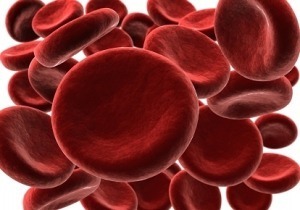
The purpose of this article is to share our experience on how we carried out the procedure safely using a syringe infusion pump as opposed to a manual syringe that is typically used for IUT procedures” Shastry et al (2019). Extract: Intrauterine transfusion (IUT) was considered since the 1960s to manage fetal anemia.[1] There are […]
Administering intravenous therapy in patients’ homes

This article looks at the practicalities of administering home IV therapy… Payne (2019). Abstract: Intravenous therapy in patients’ homes is a relatively new procedure in the community nursing practice. This article looks at the practicalities of administering home IV therapy from the following aspects: hand hygiene; how to adjust IV therapy practices to the home […]
Description of differences between intravenous iron products
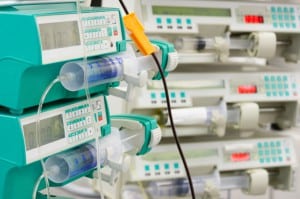
Evaluation of published clinical and non-clinical studies with different i.v. iron products in this review suggests that study results obtained with one i.v. iron product should not be assumed to be equivalent to other i.v. iron products that lack comparable study data in CHF” Martin-Malo et al (2019). Abstract: Iron deficiency is the leading cause […]
Ultrasound-guided right brachiocephalic and right subclavian vein cannulation
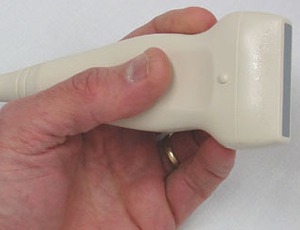
To compare ultrasound-guided right brachiocephalic vein (BCV) central venous catheter (CVC) placement to right subclavian vein (SCV) CVC insertion in terms of the puncture success rate and complications” Sun et al (2019). Abstract: OBJECTIVES: To compare ultrasound-guided right brachiocephalic vein (BCV) central venous catheter (CVC) placement to right subclavian vein (SCV) CVC insertion in terms […]

